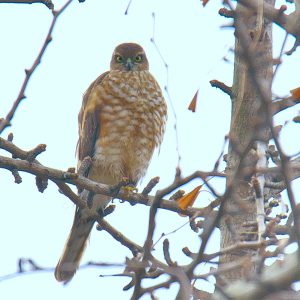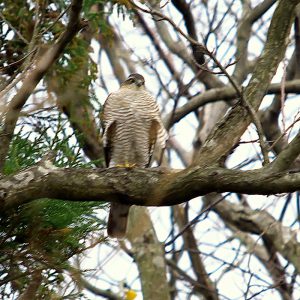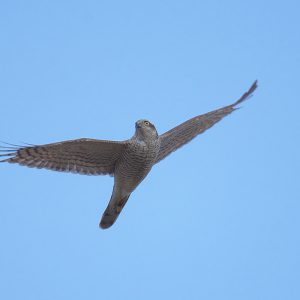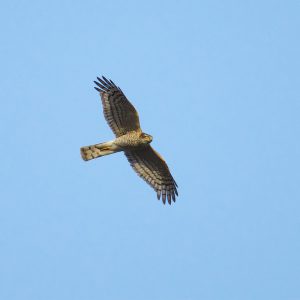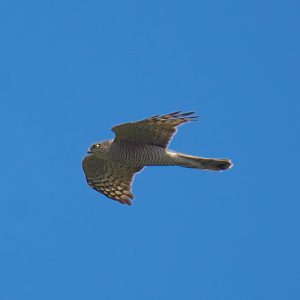むなかたが集まる
電子データベース
電子データベース
ハイタカ
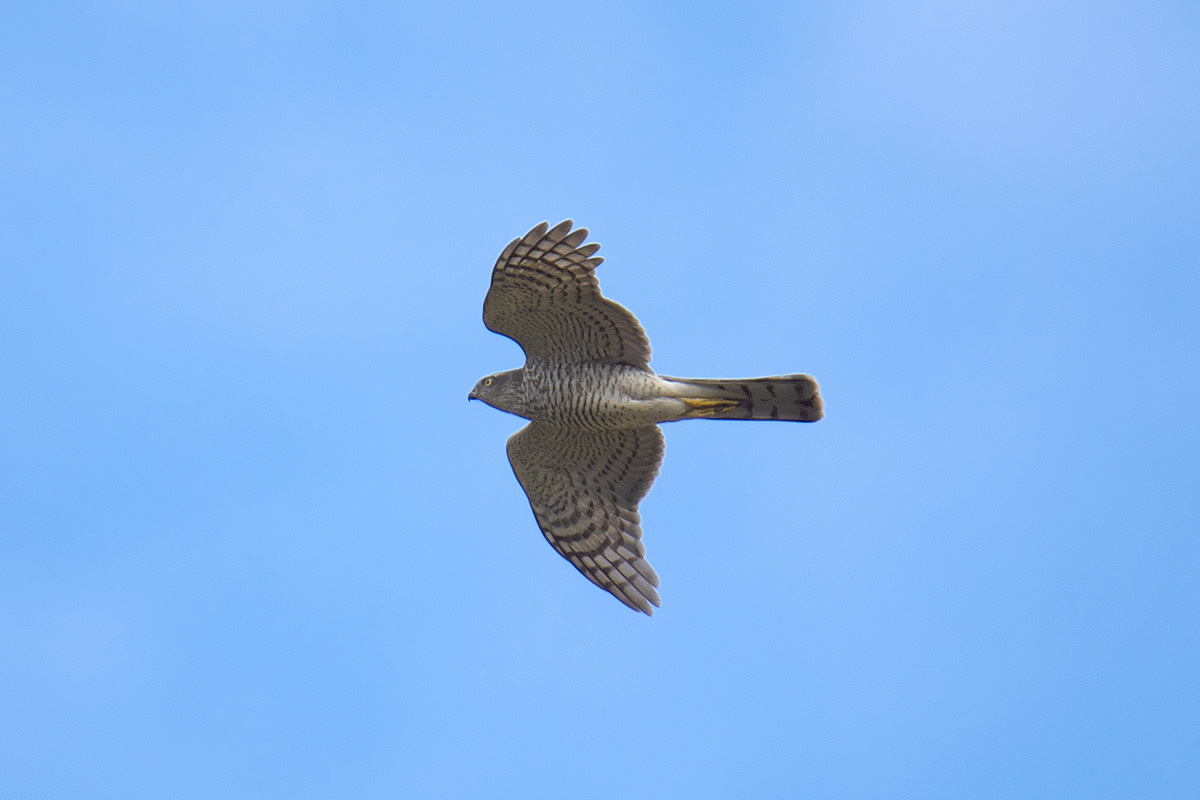
| 種目 | ハイタカ (灰鷹) | 分類 |
タカ目 タカ科 ハイタカ属 |
学名 | Accipiter nisus | 英名 | Eurasian Sparrowhawk |
|---|---|---|---|---|---|---|---|
|
ハイタカ (灰鷹) |
タカ目 タカ科 ハイタカ属 |
Accipiter nisus | Eurasian Sparrowhawk |
宗像市でみられる場所・時期
宗像では冬鳥で,10月から4月にかけて,市内各所で見ることができる。
特に,10月の渡りの時期には,宗像大島の牧場で,海から次々に渡ってくるのが観察できるし,3月から4月にかけての渡りの時期にも海を越えていく姿が観察できる。
特徴
全長は,雄30㎝から33㎝,雌37㎝から40㎝である。
雄はキジバトとほぼ同じ大きさである。頭部から体の上面は暗青灰色で,腮以下の体下面は白い。胸から腹に橙褐色の横斑がある。頬や脇も橙褐色。眉班は白いが,補足不明瞭な個体もいる。
雌は,掉尾から体上面は暗青灰色だがやや褐色みを帯びる。
雌雄とも虹彩は黄色であるが,雄で橙色に近いものもいる。
習性
留鳥として四国以北に分布する。九州では冬鳥となる。冬は,全国の平地の林,農耕地,牧草地,河川,湖沼などで見ることができる。主に小鳥などを補食する。ネズミやウサギなどを捕食することもある。
分布
国内では四国以北に留鳥として生息し,九州では冬鳥となる。南西諸島では数少ない冬鳥となる。
英語名のとおり,広くユーラシア大陸の乾燥地の除く遅滞で生息する。
その他
ハイタカとオオタカはよく似ており,区別が難しい。宗像では,ハイタカの方が多く観察できる。
 はじめに
はじめに お問い合わせ
お問い合わせ